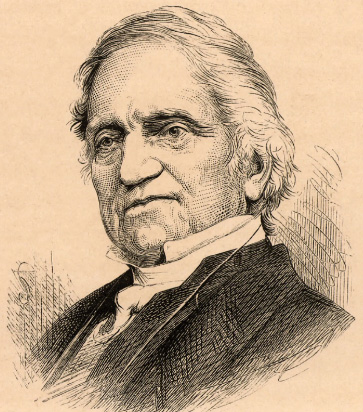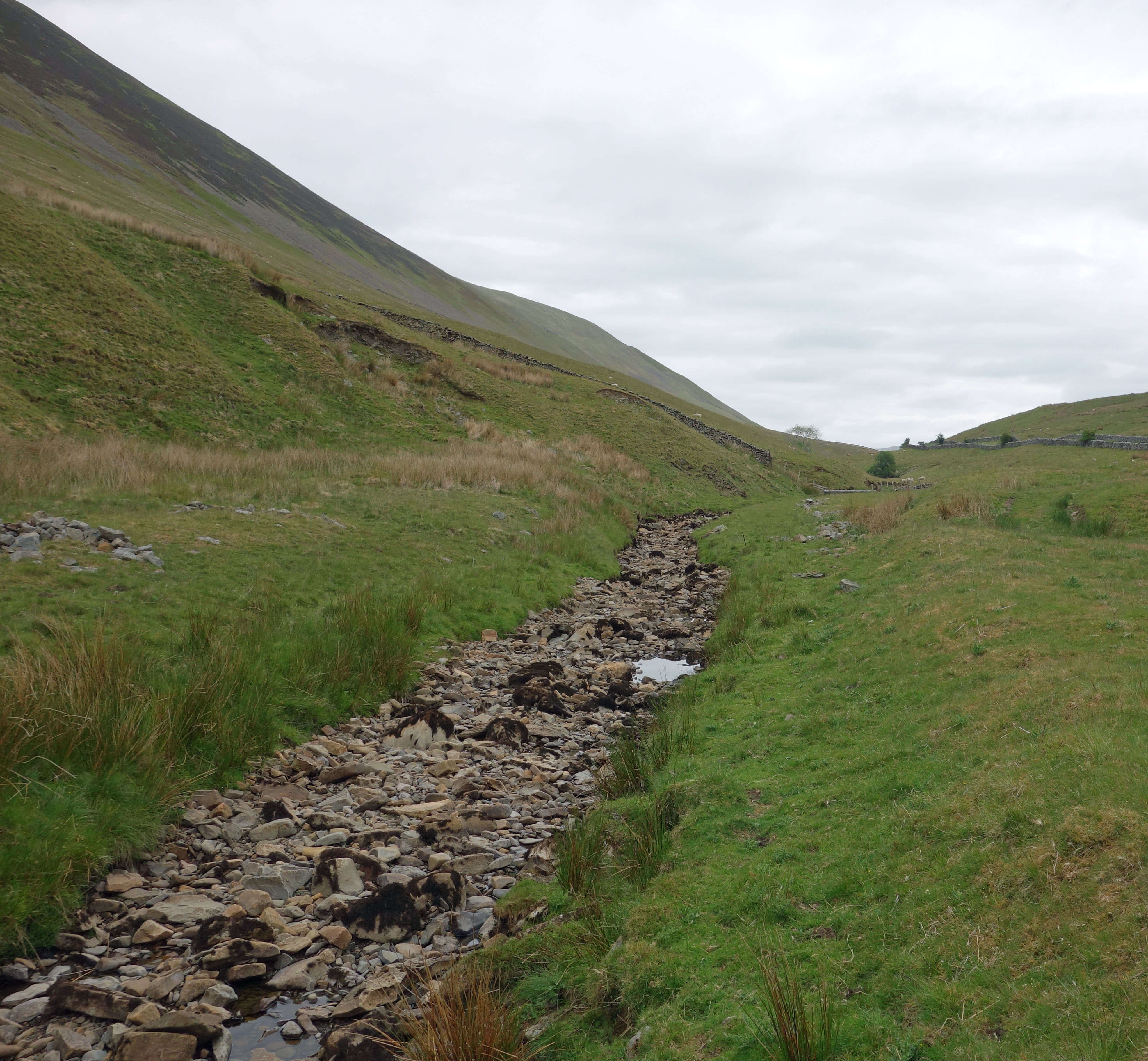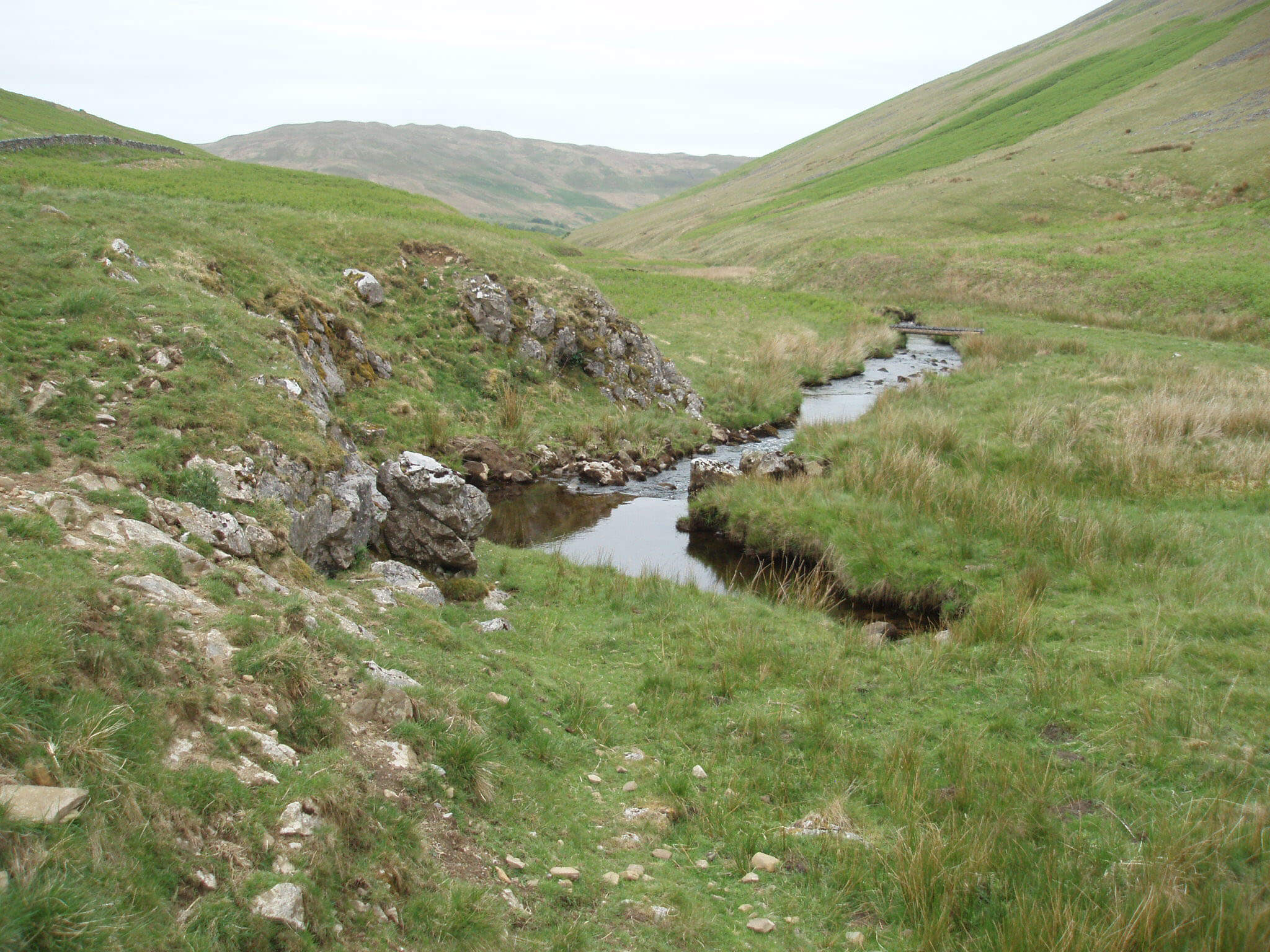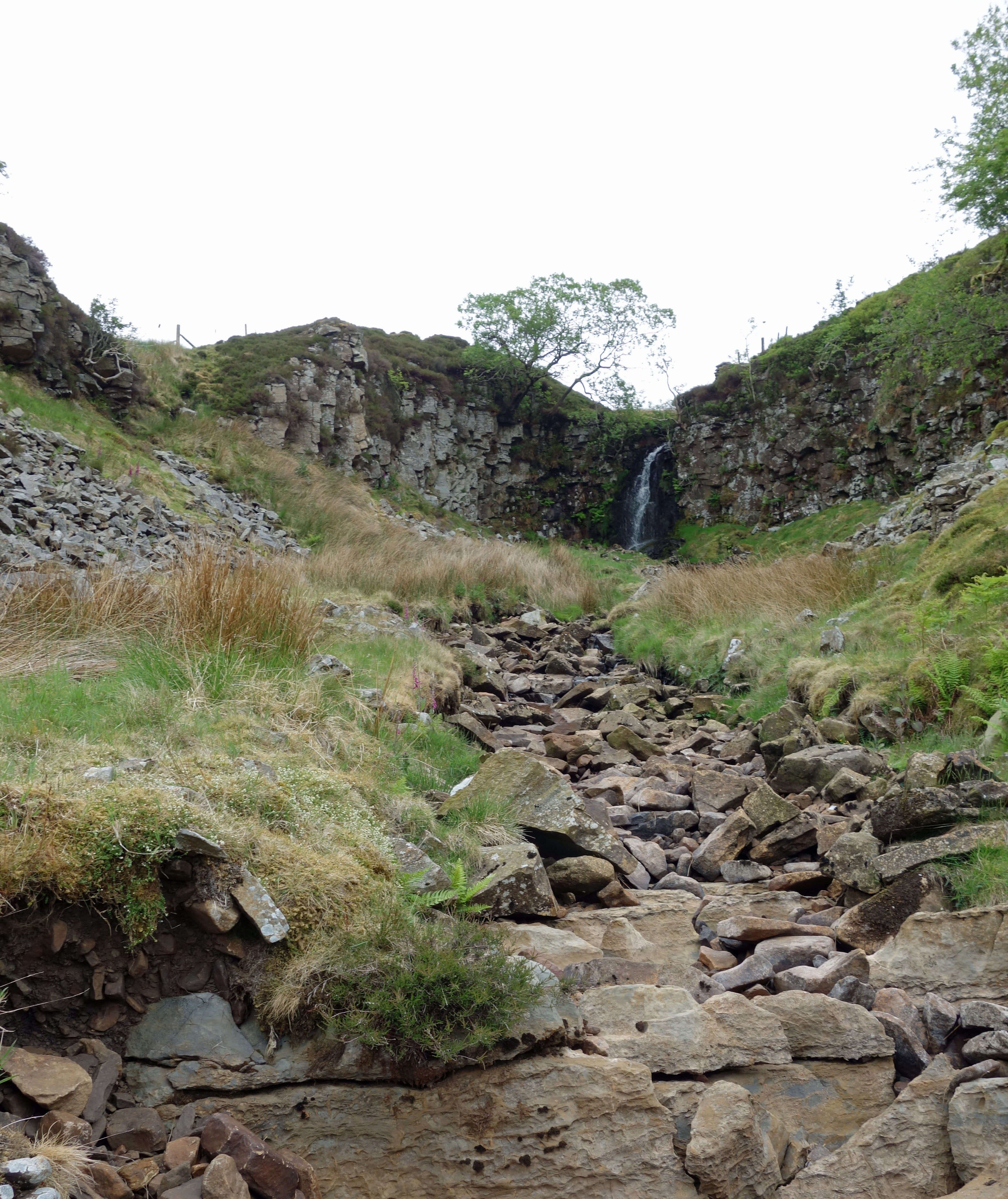
Home
Preamble
Index
Areas
Map
References
Me
Drakkar
Saunterings: Walking in North-West England
Saunterings is a set of reflections based upon walks around the counties of Cumbria, Lancashire and
North Yorkshire in North-West England
(as defined in the Preamble).
Here is a list of all Saunterings so far.
If you'd like to give a comment, correction or update (all are very welcome) or to
be notified by email when a new item is posted - please send an email to johnselfdrakkar@gmail.com.
95. Barbondale and the Dent Fault
 In 1831 Adam Sedgwick (1785-1873), Dent-born
Professor of Geology at Cambridge University, presented a paper
to the Geological Society of London in which he described, for the first time, a fault “passing along the
south flank of Casterton Low Fell, up Barbondale, thence across the valley of Dent, through the upper part
of the valley of Sedbergh, and along the flanks of Bawfell [now spelled Baugh Fell] and Wildboar Fell [Wild
Boar Fell], to the ridge between Mollerstang [Mallerstang] and Ravenstone dale [Ravenstonedale]; and that along
the whole of this line there are enormous and most complex dislocations … The ruptures produced by it are
fortunately on a scale too great to be overlooked or misunderstood.”
In 1831 Adam Sedgwick (1785-1873), Dent-born
Professor of Geology at Cambridge University, presented a paper
to the Geological Society of London in which he described, for the first time, a fault “passing along the
south flank of Casterton Low Fell, up Barbondale, thence across the valley of Dent, through the upper part
of the valley of Sedbergh, and along the flanks of Bawfell [now spelled Baugh Fell] and Wildboar Fell [Wild
Boar Fell], to the ridge between Mollerstang [Mallerstang] and Ravenstone dale [Ravenstonedale]; and that along
the whole of this line there are enormous and most complex dislocations … The ruptures produced by it are
fortunately on a scale too great to be overlooked or misunderstood.”
I am capable of overlooking and misunderstanding anything but with Sedgwick’s strong hints about what
to look out for we set off north from Blindbeck Bridge, walking on the west bank of Barkin Beck. We passed our
inexpert eye over the rocks on the slopes up to Calf Top of Middleton Fell – a grey slate, it seemed. A dipper or two were happy to
lead us upstream although the grey wagtails seemed more agitated. The beck was low but flowing contentedly
enough until, after a mile or so, just before Short Gill Bridge, it split into two. The left branch (shown left below,
looking upstream) was dry.
The right branch (shown right below, looking downstream) flowed only a short distance and was issuing from under a large rock.


We had reached limestone, through which water disappears to emerge later at a resurgence when it meets
a lower impermeable layer. We were therefore on or across Sedgwick’s fault, now called the
Dent Fault. The Dent Fault is one of the most important geological features in North-West England. As Sedgwick
said, it runs roughly between the two Kirkbys (Lonsdale and Stephen). It divides the Silurian rocks of the
Howgills and Middleton Fell (to the west) from the Carboniferous strata of typical Dales landscapes (to the east).
The former are some
70 million years older than the latter. The Dent Fault thrust the Silurian rocks upwards and is, I read, one of
the best examples in England of a reverse fault, as opposed to a normal fault, where the displaced rocks move
downwards (it is called normal not because it is more common but because it seems natural to imagine gravity
causing rocks to fall). A reverse fault is caused by compression, with tremendous forces along the line of the fault.
 However, walking alongside Barkin Beck we had seen no sign of the promised ruptures. These only became apparent to
us as we walked up beside Short Gill. Here, a prominent ridge of limestone, unlike anything on the smooth slate
slopes opposite, had been distorted, with some strata appearing to be on end. The only
previous time that I have visited Short Gill I walked down beside a bubbling beck that suddenly disappeared at the
limestone ridge to leave a weird silence. Today, though, the bed of the beck continued to be dry for some distance as we
continued up, until we reached an upper waterfall (shown right), below which the water immediately disappeared through rocks.
However, walking alongside Barkin Beck we had seen no sign of the promised ruptures. These only became apparent to
us as we walked up beside Short Gill. Here, a prominent ridge of limestone, unlike anything on the smooth slate
slopes opposite, had been distorted, with some strata appearing to be on end. The only
previous time that I have visited Short Gill I walked down beside a bubbling beck that suddenly disappeared at the
limestone ridge to leave a weird silence. Today, though, the bed of the beck continued to be dry for some distance as we
continued up, until we reached an upper waterfall (shown right), below which the water immediately disappeared through rocks.
 We emerged from the Short Gill ravine to tackle the long slog up to Crag Hill (682 metres). Rounding one bend we came
upon a buzzard perched on a post just ten metres ahead. It didn’t notice us for a while. It was probably focussed
on the voles. I have never seen so many voles on one walk – they were constantly catching our eye as they
scuttled into their little burrows ahead of us. From Crag Hill we could see as far as Pendle, Black Combe
and Wild Boar Fell but it had remained overcast so that everywhere was a rather dull grey.
We emerged from the Short Gill ravine to tackle the long slog up to Crag Hill (682 metres). Rounding one bend we came
upon a buzzard perched on a post just ten metres ahead. It didn’t notice us for a while. It was probably focussed
on the voles. I have never seen so many voles on one walk – they were constantly catching our eye as they
scuttled into their little burrows ahead of us. From Crag Hill we could see as far as Pendle, Black Combe
and Wild Boar Fell but it had remained overcast so that everywhere was a rather dull grey.
The walk down past Richard
Man and over the moor was of little interest. We heard two cuckoos, or rather two cuckoo calls from one cuckoo - a
rather plaintive end to its cuckooing season.
We passed a few shakeholes that told us that there was limestone
underneath but there was no clear ridge as at Short Gill. We must have crossed the Dent Fault again but noticed nothing that
emphasised its presence.
You have to admire the chutzpah of early geologists. The science of geology had only existed for a few decades and
its early practitioners necessarily knew nothing of, for example, the theories of glaciation and plate tectonics but
nevertheless they were bold enough to say that features which humanity had not previously paid any regard to
cannot possibly be overlooked or misunderstood. After all, at that time most people in Britain read the first
sentences of the
Bible, saying that “In the beginning God created the heaven and the earth. And the earth was without form and
void”, and considered that to be the end of the matter. Sedgwick was
himself ordained as a priest but that
didn’t stop him trying to impose form upon God’s creation and finding faults with it.
Date: June 8th 2020
Start: SD655827, near Blindbeck Bridge (Map: OL2)
Route: NE on west bank of Barkin Beck – Short Gill Bridge – SE by Short Gill, SE –
Crag Hill – SW
by fence – Great Aygill – NW – Blindbeck Bridge
Distance: 7 miles; Ascent: 510 metres
Home
Preamble
Index
Areas
Map
References
Me
Drakkar
© John Self, Drakkar Press, 2018-

Top photo: The western Howgills from Dillicar;
Bottom photo: Blencathra from Great Mell Fell


 In 1831 Adam Sedgwick (1785-1873), Dent-born
Professor of Geology at Cambridge University, presented a paper
to the Geological Society of London in which he described, for the first time, a fault “passing along the
south flank of Casterton Low Fell, up Barbondale, thence across the valley of Dent, through the upper part
of the valley of Sedbergh, and along the flanks of Bawfell [now spelled Baugh Fell] and Wildboar Fell [Wild
Boar Fell], to the ridge between Mollerstang [Mallerstang] and Ravenstone dale [Ravenstonedale]; and that along
the whole of this line there are enormous and most complex dislocations … The ruptures produced by it are
fortunately on a scale too great to be overlooked or misunderstood.”
In 1831 Adam Sedgwick (1785-1873), Dent-born
Professor of Geology at Cambridge University, presented a paper
to the Geological Society of London in which he described, for the first time, a fault “passing along the
south flank of Casterton Low Fell, up Barbondale, thence across the valley of Dent, through the upper part
of the valley of Sedbergh, and along the flanks of Bawfell [now spelled Baugh Fell] and Wildboar Fell [Wild
Boar Fell], to the ridge between Mollerstang [Mallerstang] and Ravenstone dale [Ravenstonedale]; and that along
the whole of this line there are enormous and most complex dislocations … The ruptures produced by it are
fortunately on a scale too great to be overlooked or misunderstood.”


 However, walking alongside Barkin Beck we had seen no sign of the promised ruptures. These only became apparent to
us as we walked up beside Short Gill. Here, a prominent ridge of limestone, unlike anything on the smooth slate
slopes opposite, had been distorted, with some strata appearing to be on end. The only
previous time that I have visited Short Gill I walked down beside a bubbling beck that suddenly disappeared at the
limestone ridge to leave a weird silence. Today, though, the bed of the beck continued to be dry for some distance as we
continued up, until we reached an upper waterfall (shown right), below which the water immediately disappeared through rocks.
However, walking alongside Barkin Beck we had seen no sign of the promised ruptures. These only became apparent to
us as we walked up beside Short Gill. Here, a prominent ridge of limestone, unlike anything on the smooth slate
slopes opposite, had been distorted, with some strata appearing to be on end. The only
previous time that I have visited Short Gill I walked down beside a bubbling beck that suddenly disappeared at the
limestone ridge to leave a weird silence. Today, though, the bed of the beck continued to be dry for some distance as we
continued up, until we reached an upper waterfall (shown right), below which the water immediately disappeared through rocks.
 We emerged from the Short Gill ravine to tackle the long slog up to Crag Hill (682 metres). Rounding one bend we came
upon a buzzard perched on a post just ten metres ahead. It didn’t notice us for a while. It was probably focussed
on the voles. I have never seen so many voles on one walk – they were constantly catching our eye as they
scuttled into their little burrows ahead of us. From Crag Hill we could see as far as Pendle, Black Combe
and Wild Boar Fell but it had remained overcast so that everywhere was a rather dull grey.
We emerged from the Short Gill ravine to tackle the long slog up to Crag Hill (682 metres). Rounding one bend we came
upon a buzzard perched on a post just ten metres ahead. It didn’t notice us for a while. It was probably focussed
on the voles. I have never seen so many voles on one walk – they were constantly catching our eye as they
scuttled into their little burrows ahead of us. From Crag Hill we could see as far as Pendle, Black Combe
and Wild Boar Fell but it had remained overcast so that everywhere was a rather dull grey.
